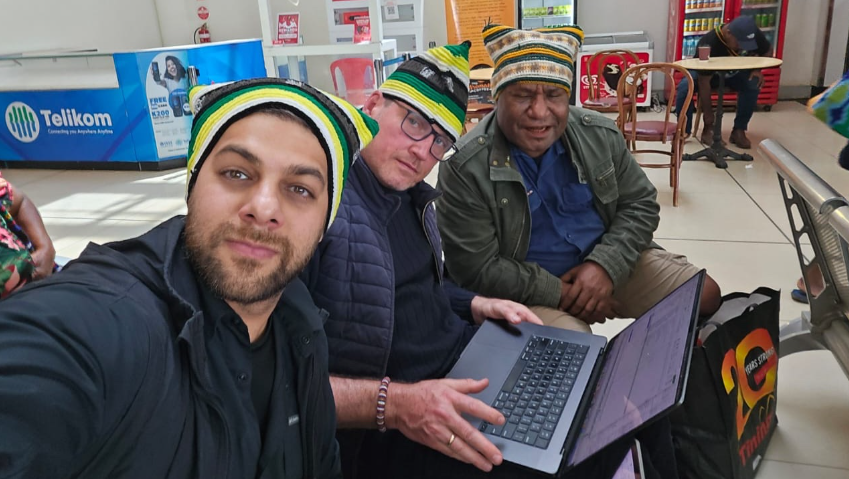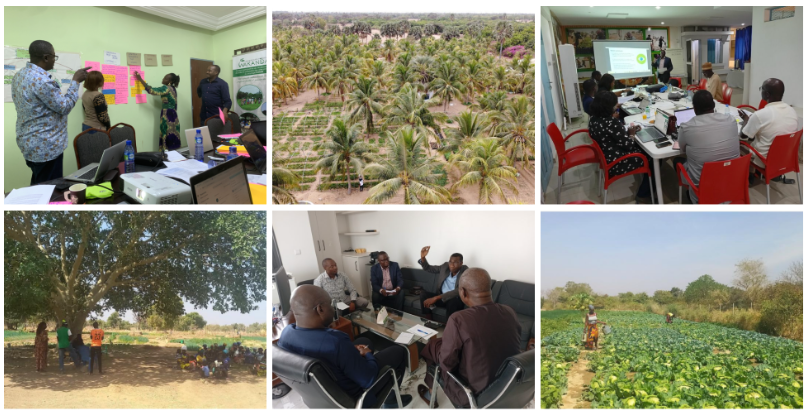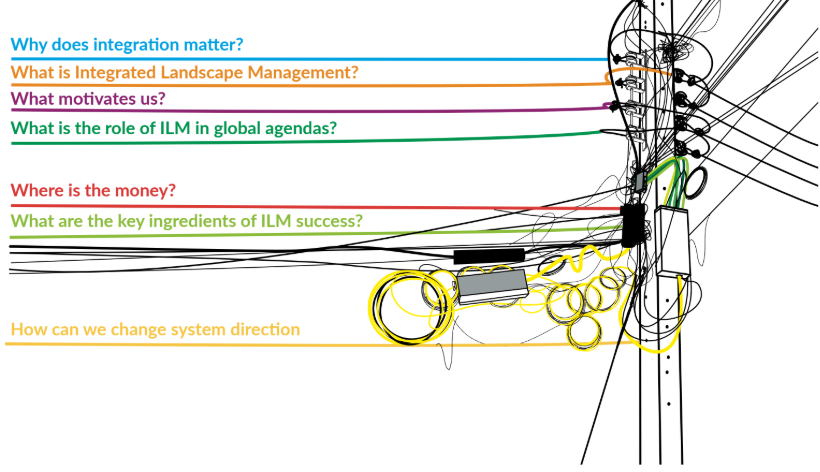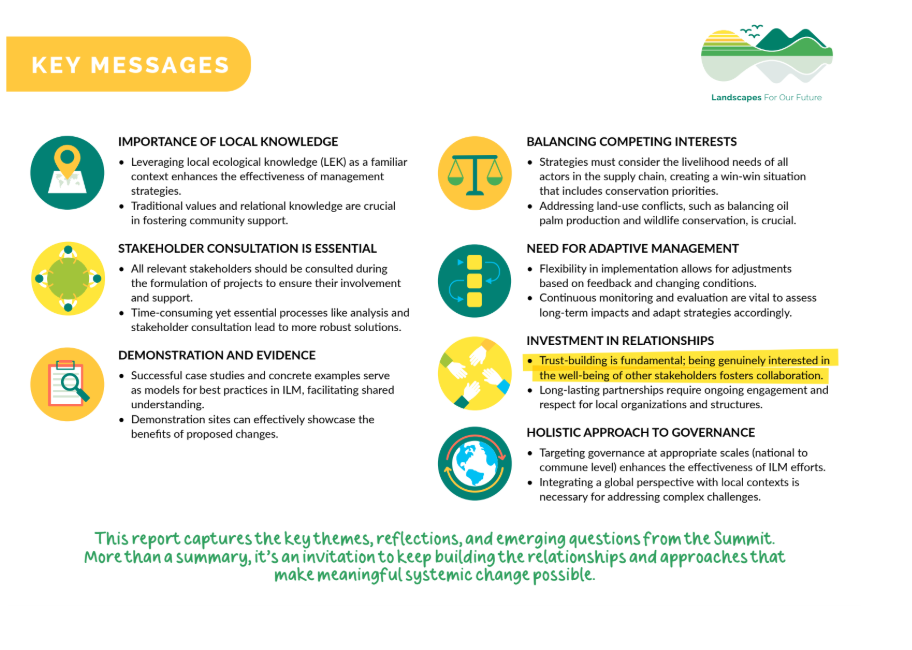
We’ve been travelling. And learning. A lot! Since our Southeast Asian regional summit late last year, we’ve visited the bulk of Landscapes For Our Future’s 22 projects in an effort to glean those insights that are not evident when analyzing single projects. As most of you’re aware, since you’re such key parts of it, we’re documenting your hard-earned experience for the benefit of future practitioners and policymakers who want to design and implement Integrated Landscape Management (ILM) interventions.
The final results are not yet in, but we’re happy to share some initial feedback. In this newsletter:
👉 Divine Foundjem reflects on some innovative strategies in Francophone Africa
👉 Peter Cronkleton and Natalia Cisneros provide insights on their learnings from Latin America
👉 Kim Geheb contemplates whether ILM can be a vehicle for peace in Papua New Guinea and elsewhere
👉 Our SE Asian colleagues reveal their top ILM success factors
👉 Our Latin American and Caribbean project teams illustrate the role of iterative learning and adaptation in politically sensitive, ecologically important, and operationally challenging settings.
These visits showed us that there’s still so much to uncover. With the right approaches, the right questions, and the right space for reflection, people begin to see things differently.”
– Divine Foundjem, LFF focal point for Francophone Africa
UPDATES
Insights from our lesson learning process

First: thank you to each of the country teams for being such wonderful hosts and collaborators! You already know that our visits were not business as usual. They were structured moments for real reflection, where we sat down together over long and intense days to look back at what had been done in the landscapes and ask key questions:
- What have we learned?
- What worked well?
- What didn’t work as expected?
- And what does that tell us about how to improve integrated landscape management?
In his blog post, Divine Foundjem shares how teams used LFF’s framework of six ILM dimensions to uncover valuable insights — from the role of decentralised planning in Senegal to the unexpected impact of football matches as a conflict resolution tool in Burkina Faso.

In Colombia, Ecuador and Paraguay, our team found projects making real strides in bringing diverse stakeholders together and grounding Integrated Landscape Management in concrete local actions. Yet challenges remain around scaling up and sustaining this momentum over time. These reflections offer practical lessons for landscape practitioners and donors everywhere – insights that are vital as we shape the next generation of landscape programmes.
REFLECTIONS FROM THE FIELD
How has iterative learning and adaptation manifested across LFF landscapes?
Iterative learning is emerging as a powerful driver of action across LFF landscapes by enabling projects to remain responsive, adaptive, and grounded in local realities. Rather than relying on rigid plans, project teams embrace flexible, feedback-driven approaches that allow them to learn alongside communities, adjust strategies based on real-time insights, and co-create solutions that are both effective and locally legitimate. Whether through peer exchanges in Ecuador, participatory experiments in Colombia, or adaptive planning in Paraguay, this continuous learning process is helping overcome political, ecological, and social challenges, translating reflection into tangible progress on the ground.
Can ILM be a vehicle for peace?
In Papua New Guinea’s remote and rugged landscapes, local conflicts can threaten both people’s safety and the natural resources they depend on. Yet ILM approaches can help build the trust and collaboration needed to reduce tensions and unlock progress for people and nature alike.
These clans are tight. The social capital of Enga province is immense. But this can also lead to problems. As one of my colleagues here put it, ‘When you attack one [clan member], you attack us all. Even if I do not agree with your perspective, I will come to fight alongside you.’ And that’s the thing. The Engans fight a lot.”
– Kim Geheb
Kim Geheb’s latest blog explore how our project in PNG is navigating these challenges – and what lessons this holds for landscape practitioners and donors working in fragile contexts.
PUBLICATIONS
What does it take to make ILM work in practice? Lessons from SE Asia

Practitioners and donors working across Southeast Asia gathered in Bangkok late last year with a shared purpose: to learn, unlearn, and exchange honest reflections. Together, we unpacked what drives success, what holds progress back, and what lessons can guide us into the future.
These insights are highly relevant for implementors worldwide, whether those in our Landscapes For Our Future programme or those shaping new initiatives. Download the illustrated report for key takeaways that can inform your own landscape efforts.




